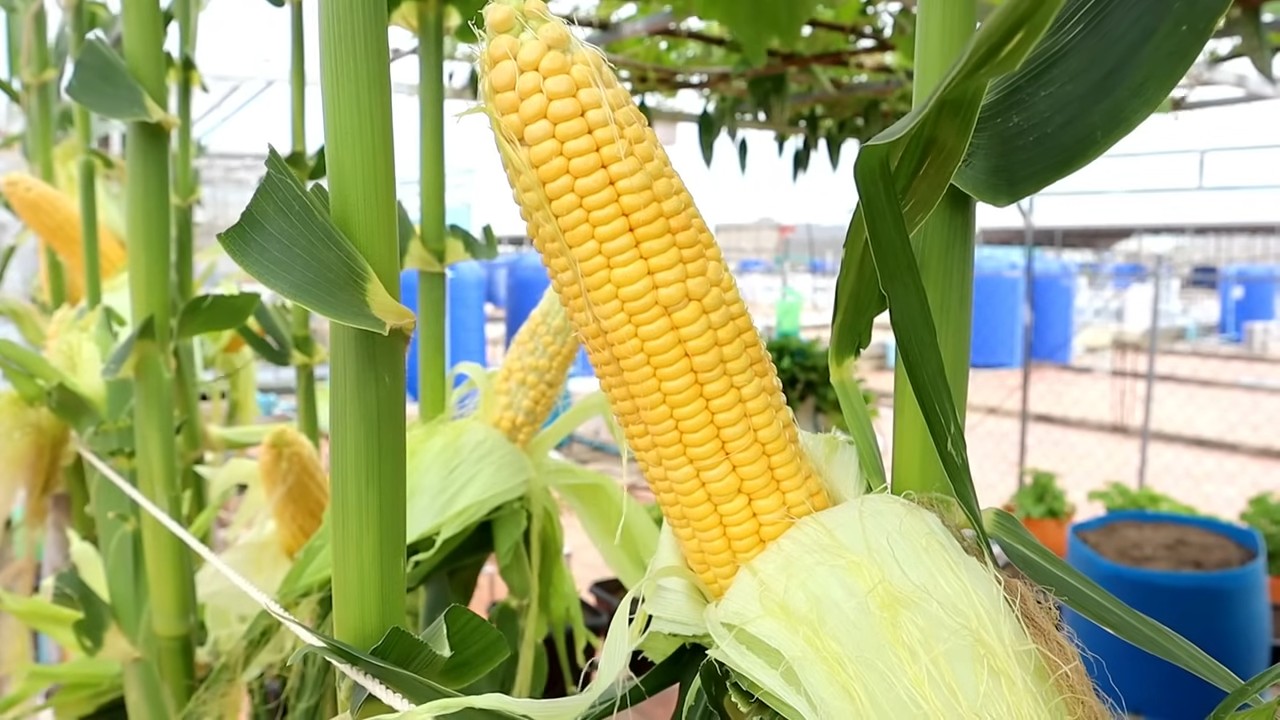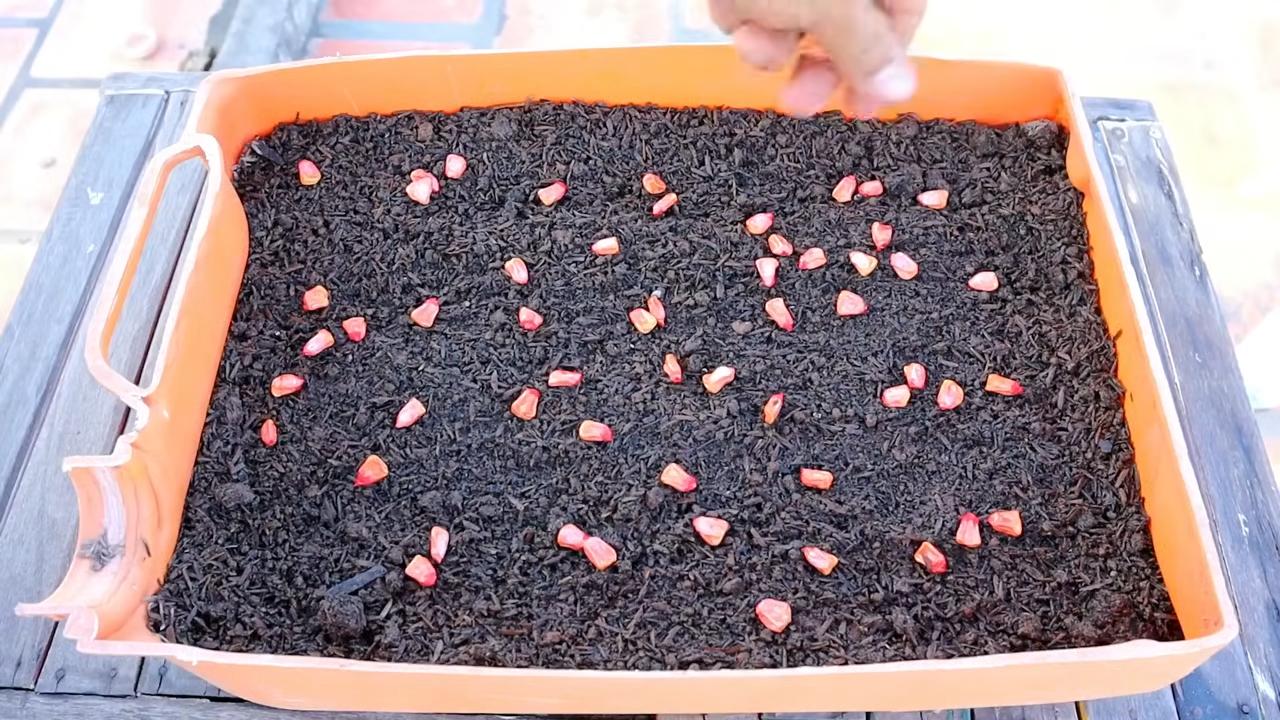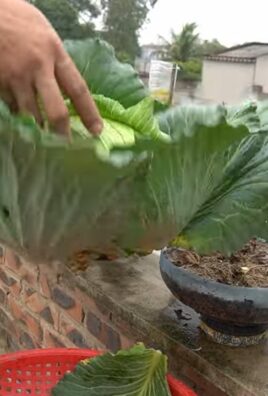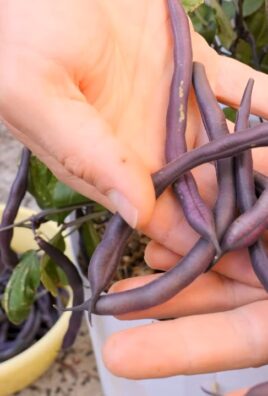Container corn growing might sound like something out of a children’s book, but trust me, it’s a real and rewarding experience! Forget sprawling acres; we’re bringing the farm to your patio, balcony, or even your sunny windowsill. Have you ever imagined plucking fresh, sweet corn right from your own backyard, even if your backyard is just a cozy corner of your apartment?
Growing corn, a staple crop with roots stretching back thousands of years to ancient Mesoamerica, has traditionally been the domain of large-scale agriculture. Corn held immense cultural and spiritual significance for indigenous peoples, representing sustenance and prosperity. But who says we can’t adapt this ancient grain to our modern, space-conscious lifestyles?
In today’s world, where access to fresh, locally sourced produce is becoming increasingly important, container corn growing offers a fantastic solution. It’s not just about the delicious corn on the cob; it’s about the satisfaction of nurturing a plant from seed to harvest, connecting with nature, and enjoying the freshest possible ingredients. Plus, it’s a fantastic conversation starter! This DIY guide will equip you with all the tips and tricks you need to successfully grow corn in containers, regardless of your experience level. Let’s get our hands dirty and bring a little bit of the farm to your home!

Grow Your Own Corn in Containers: A Beginner’s Guide
Hey there, fellow gardening enthusiasts! Ever dreamt of biting into a freshly picked ear of sweet corn, grown right on your own patio? Well, dream no more! Growing corn in containers is totally doable, even if you don’t have a sprawling backyard. It might seem a little unconventional, but with the right approach, you can enjoy a surprisingly bountiful harvest. I’m going to walk you through everything you need to know, from choosing the right variety to troubleshooting common problems. Let’s get started!
Choosing the Right Corn Variety
Not all corn varieties are created equal, especially when it comes to container gardening. You’ll want to opt for shorter, more compact varieties that are specifically bred for smaller spaces. Here’s what to look for:
* Dwarf or Miniature Varieties: These are your best bet. They typically reach a height of 4-5 feet, making them much more manageable in containers. Look for names like ‘On Deck’, ‘Golden Midget’, or ‘Trinity’.
* Early Maturing Varieties: Since container-grown corn might have a slightly shorter growing season, choosing varieties that mature quickly is a good idea. This ensures you’ll get a harvest before the weather turns cold.
* Consider Pollination: Corn is wind-pollinated, so you’ll need to plant multiple stalks close together to ensure proper pollination. Some newer varieties are bred to be more self-pollinating, which can be helpful in containers. Do some research and see what’s available in your area.
Gathering Your Supplies
Before you even think about planting, you’ll need to gather all your supplies. Trust me, having everything on hand will make the whole process much smoother.
* Large Containers: This is crucial! Corn needs plenty of space for its roots to grow. I recommend using containers that are at least 12-18 inches in diameter and 12 inches deep. The bigger, the better, really. Think large pots, half whiskey barrels, or even sturdy plastic tubs.
* High-Quality Potting Mix: Don’t skimp on the potting mix! Use a well-draining mix that’s rich in organic matter. Avoid using garden soil, as it can become compacted in containers and doesn’t drain well. I like to use a mix of compost, peat moss, and perlite.
* Corn Seeds: Obviously! Choose the variety you’ve selected based on the criteria above. Make sure the seeds are fresh for the best germination rate.
* Slow-Release Fertilizer: Corn is a heavy feeder, so a slow-release fertilizer will provide a steady supply of nutrients throughout the growing season. Look for a fertilizer with a balanced NPK ratio (nitrogen, phosphorus, and potassium).
* Watering Can or Hose: You’ll need a way to water your corn regularly. A watering can is fine for smaller containers, but a hose with a gentle spray nozzle is more efficient for larger setups.
* Optional: Stakes or Trellis: Depending on the variety you choose, you might need to provide some support for your corn stalks, especially if they get tall and top-heavy.
* Optional: Bird Netting: Birds love to snack on young corn seedlings, so bird netting can be a lifesaver.
Planting Your Corn
Okay, now for the fun part! Planting your corn is relatively straightforward, but there are a few key things to keep in mind.
1. Prepare Your Containers: Start by filling your containers with the potting mix, leaving a few inches of space at the top.
2. Sow the Seeds: Plant the corn seeds about 1-2 inches deep and 4-6 inches apart. Remember, you’ll want to plant multiple seeds in each container to ensure good pollination. I usually plant 4-6 seeds in a large container.
3. Water Thoroughly: After planting, water the soil thoroughly until it’s evenly moist.
4. Choose a Sunny Location: Corn needs at least 6-8 hours of sunlight per day, so choose a sunny spot for your containers.
5. Protect from Birds: If you’re using bird netting, now’s the time to put it in place.
Caring for Your Container Corn
Once your corn is planted, it’s time to provide the care it needs to thrive. This involves watering, fertilizing, and keeping an eye out for pests and diseases.
1. Watering: Corn needs consistent moisture, especially during hot weather. Water deeply whenever the top inch of soil feels dry to the touch. Avoid overwatering, as this can lead to root rot.
2. Fertilizing: As I mentioned earlier, corn is a heavy feeder. In addition to the slow-release fertilizer you added at planting, you can also supplement with a liquid fertilizer every few weeks. Look for a fertilizer that’s high in nitrogen during the early stages of growth, and then switch to a fertilizer that’s higher in phosphorus and potassium as the corn starts to tassel and form ears.
3. Pollination Assistance (If Needed): If you’re growing a variety that’s not self-pollinating, you might need to give pollination a little boost. When the tassels (the male flowers at the top of the stalk) start to shed pollen, gently shake the stalks to help the pollen fall onto the silks (the female flowers that emerge from the developing ears). You can also use a small paintbrush to collect pollen from the tassels and manually apply it to the silks.
4. Pest and Disease Control: Keep an eye out for common corn pests like corn earworms, aphids, and spider mites. You can usually control these pests with insecticidal soap or neem oil. Also, watch out for fungal diseases like rust and leaf blight. Good air circulation and proper watering can help prevent these diseases. If you do notice any signs of disease, remove the affected leaves and treat with a fungicide if necessary.
5. Support: As your corn stalks grow taller, they might need some support to prevent them from falling over. You can use stakes or a trellis to provide support. Simply tie the stalks to the stakes or trellis with twine.
Harvesting Your Corn
The moment you’ve been waiting for! Harvesting your corn is the most rewarding part of the process. Here’s how to know when your corn is ready to pick:
1. Check the Silks: The silks should turn brown and dry.
2. Feel the Ears: Gently squeeze the ears. They should feel plump and full.
3. Peel Back the Husk: Carefully peel back a small portion of the husk and puncture a kernel with your fingernail. If the liquid that comes out is milky, the corn is ready to harvest. If it’s clear, it needs a little more time.
4. Harvest: To harvest, grasp the ear firmly and twist it downward. It should snap off easily from the stalk.
Troubleshooting Common Problems
Even with the best care, you might encounter some problems along the way. Here are a few common issues and how to address them:
* Poor Germination: If your seeds aren’t germinating, make sure the soil is warm enough (at least 60°F). Also, ensure the soil is consistently moist but not waterlogged.
* Stunted Growth: Stunted growth can be caused by a lack of nutrients, insufficient sunlight, or pests. Make sure you’re fertilizing regularly and that your corn is getting enough sunlight. Check for pests and treat accordingly.
* Poor Pollination: If your ears are small and underdeveloped, it could be due to poor pollination. Try hand-pollinating as described above.
* Ears Not Filling Out: This can be caused by a lack of water or nutrients. Make sure you’re watering deeply and fertilizing regularly.
* Pests and Diseases: As mentioned earlier, keep an eye out for pests and diseases and treat them promptly.
Enjoying Your Homegrown Corn
Congratulations! You’ve successfully grown corn in containers. Now it’s time to enjoy the fruits (or rather, vegetables) of your labor. Freshly picked corn is incredibly delicious. You can grill it, boil it, roast it, or even eat it raw. It’s also great in salads, soups, and stews.
Growing corn in containers is a fun and rewarding experience. It might take a little practice to get it right, but with a little patience and attention, you can enjoy a bountiful harvest of homegrown corn, even if you don’t have a lot of space. Happy gardening!

Conclusion
So, there you have it! Growing your own corn in containers isn’t just a fun gardening project; it’s a surprisingly accessible way to enjoy fresh, homegrown corn, even without acres of farmland. This DIY container corn growing method offers a unique opportunity to connect with your food source, learn about the plant life cycle, and ultimately, savor the unparalleled taste of corn picked straight from your “garden” – be it a balcony, patio, or small backyard.
Why is this a must-try? Because it democratizes access to fresh produce. No longer is the joy of eating sweet, juicy corn limited to those with sprawling gardens. Container gardening brings the farm to your doorstep, allowing you to cultivate a small-scale cornfield in the most unexpected of places. Imagine the satisfaction of serving corn on the cob that you nurtured from seed to harvest. It’s a conversation starter, a source of pride, and a delicious reward for your efforts.
Beyond the sheer novelty and convenience, container corn growing offers a level of control you simply don’t get with traditional gardening. You can meticulously manage the soil composition, ensuring optimal drainage and nutrient levels. You can easily move your containers to chase the sun or shelter them from harsh weather. And you can keep a close eye on your plants, quickly addressing any pest or disease issues that may arise.
But the best part? The possibilities for variation are endless! Experiment with different corn varieties to discover your personal favorite. Try growing ornamental corn for a splash of color and visual interest. Companion plant herbs like basil or marigolds in your containers to deter pests and enhance the flavor of your corn. You can even try succession planting, staggering your planting dates to ensure a continuous harvest throughout the growing season.
Don’t be intimidated by the prospect of growing corn in containers. It’s a surprisingly forgiving process, and the rewards are well worth the effort. With a little planning, preparation, and patience, you can transform your outdoor space into a miniature cornfield.
We wholeheartedly encourage you to give this DIY container corn growing trick a try. It’s a rewarding experience that will connect you with nature, enhance your culinary creations, and impress your friends and family. And most importantly, it will provide you with a steady supply of fresh, delicious corn that you can be proud to call your own.
Once you’ve embarked on your container corn growing adventure, we’d love to hear about your experiences! Share your tips, tricks, and triumphs in the comments below. Let us know which corn varieties you’ve tried, what challenges you’ve faced, and what delicious dishes you’ve created with your homegrown harvest. Together, we can build a community of container corn enthusiasts and inspire others to embrace the joy of growing their own food. So, grab your seeds, your containers, and your gardening gloves, and let’s get growing!
Frequently Asked Questions (FAQ)
What is the best type of corn to grow in containers?
The best types of corn for container growing are shorter, more compact varieties. Look for terms like “dwarf,” “mini,” or “early maturing” on the seed packet. Some popular choices include:
* ‘On Deck’ Hybrid: A very early and compact variety.
* ‘Golden Bantam’: A classic sweet corn that performs well in containers.
* ‘Trinity’: A multi-eared variety that is well-suited for smaller spaces.
* ‘Blue Jade’: A beautiful ornamental corn with blue kernels.
Avoid taller, field corn varieties, as they require more space and may not thrive in containers.
How big should my containers be for growing corn?
Corn plants need plenty of room for their roots to develop. A good rule of thumb is to use containers that are at least 12 inches in diameter and 12 inches deep. Larger containers are even better, as they will provide more space for the roots to grow and will help to retain moisture. A 5-gallon bucket or a large planter pot works well. Remember that you’ll need to plant multiple corn stalks together for proper pollination, so choose a container that can accommodate at least 3-4 plants.
What kind of soil should I use for container corn growing?
Corn plants need well-draining, nutrient-rich soil. A good potting mix is essential. Avoid using garden soil, as it can be too heavy and may not drain properly. You can also amend your potting mix with compost or other organic matter to improve its fertility. A slightly acidic to neutral pH (around 6.0 to 7.0) is ideal.
How often should I water my container corn?
Corn plants are heavy drinkers, especially during hot weather. Water your containers deeply and regularly, ensuring that the soil stays consistently moist but not waterlogged. Check the soil moisture level daily, and water when the top inch feels dry to the touch. You may need to water your containers more frequently during the hottest part of the summer.
How much sunlight does container corn need?
Corn plants need at least 6-8 hours of direct sunlight per day to thrive. Choose a location for your containers that receives plenty of sunlight throughout the day. If you live in a particularly hot climate, you may need to provide some afternoon shade to prevent the plants from overheating.
How do I pollinate my container corn?
Corn is wind-pollinated, so you’ll need to ensure that the pollen from the tassels (the male flowers at the top of the plant) reaches the silks (the female flowers on the ears of corn). If you’re growing your corn in a sheltered location, you may need to hand-pollinate it. To do this, gently shake the tassels over the silks, or use a small paintbrush to transfer pollen from the tassels to the silks. Repeat this process every day for several days to ensure that all of the silks are pollinated.
How do I fertilize my container corn?
Corn plants are heavy feeders, so you’ll need to fertilize them regularly. Use a balanced fertilizer (such as 10-10-10) every 2-3 weeks, following the instructions on the fertilizer label. You can also supplement with organic fertilizers, such as compost tea or fish emulsion.
When is my container corn ready to harvest?
Corn is typically ready to harvest about 60-100 days after planting, depending on the variety. The silks will turn brown and dry, and the kernels will be plump and milky when pierced with a fingernail. To harvest, gently pull the ear of corn downward and twist it off the stalk.
What are some common pests and diseases that affect container corn?
Some common pests that can affect container corn include aphids, corn earworms, and spider mites. Diseases that can affect corn include rust, smut, and leaf blight. Inspect your plants regularly for signs of pests or diseases, and take action promptly to prevent them from spreading. Organic pest control methods, such as insecticidal soap or neem oil, can be effective for controlling many pests.
Can I grow corn in containers indoors?
While it’s possible to grow corn indoors, it’s not ideal. Corn plants need a lot of sunlight, which can be difficult to provide indoors. You’ll also need to ensure that you have adequate space for the plants to grow. If you do decide to grow corn indoors, choose a sunny location and supplement with grow lights. You’ll also need to hand-pollinate the plants.





Leave a Comment